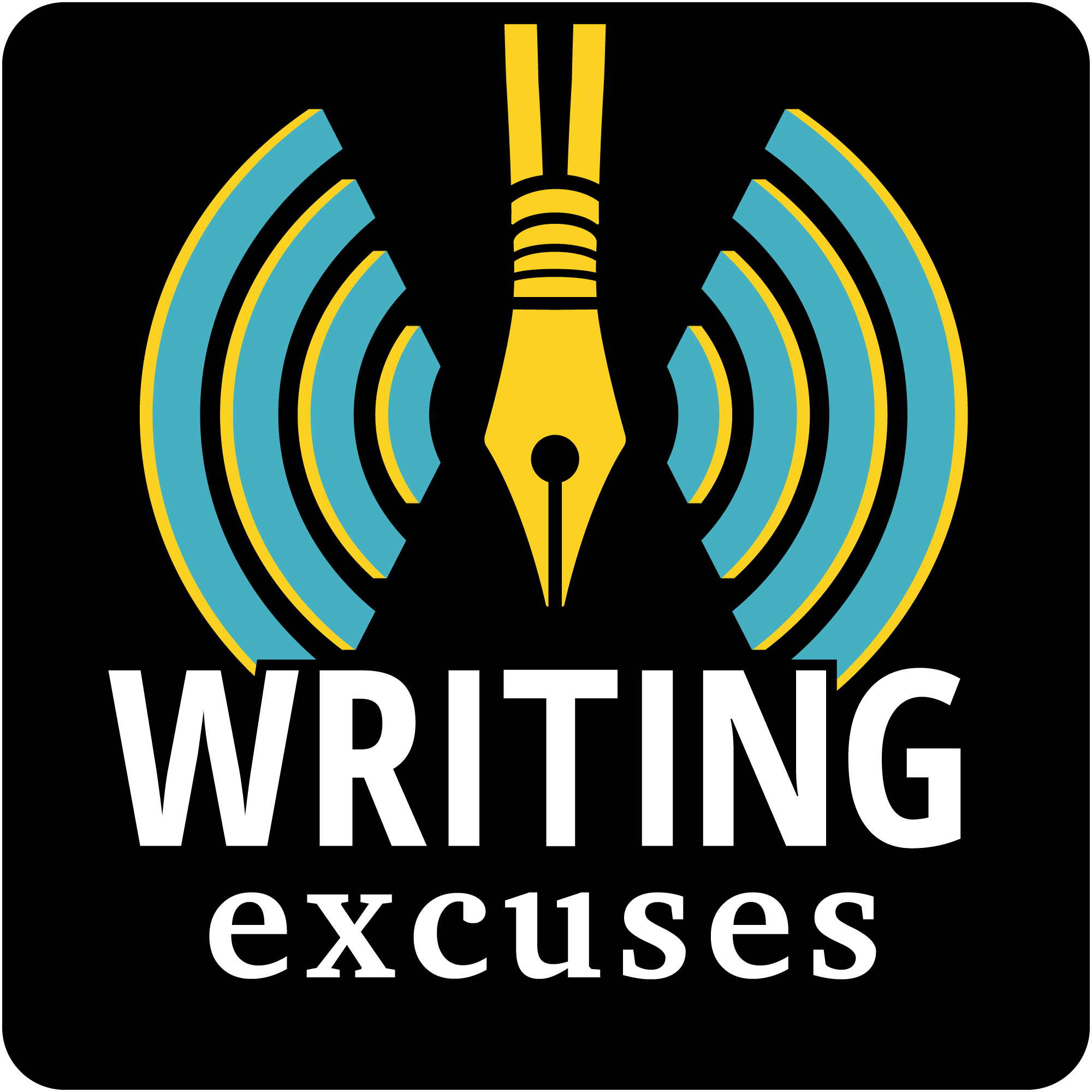Writing Excuses Episode 25: Viewpoint and Tense Part 2
We are pleased to present the second half of “Viewpoint and Tense,” which, as we all know, is Tense. Part 1 was Viewpoint. It’s not two podcasts that both talk about tense and viewpoint, it’s two totally different podcasts that share a title for some reason. Why didn’t we just do two separate podcasts, one on tense and one on viewpoint, instead of trying to connect them like this? Because, as we tell you every week, we’re not that smart.
This week’s Writing Excuses Book of the Week: Warbreaker, by some hack.
Powered by RedCircle
Transcript
Key Points? Find the most interesting person, the one who is the pivot of the scene, and tell it from their POV in Third Person Limited, Past Tense. New writers should stick with one viewpoint. Do Third Person Limited well, and you are (almost) guaranteed to sell.
Third Person Limited (3PL) — you need to do this well, because about 90% of current genre fiction is done this way. So, what does 3PL give us and how do you write it correctly?
- How do you write it correctly? When you start to get into the scene, know what it is going to accomplish and who is in it, that’s when you decide — based on where it is going and where it is coming from — that the most interesting person in it is this one. He changes or makes important decisions or will be hurt most. So you decide that you’ll tell it from his P0V.
- I’m looking for what’s funniest. I look for opportunities to put Ennesby and Schlock in dialog heavy settings [because they can make jokes] Ennesby and Tagon work well, too.
New writers try for too many viewpoints. They have trouble juggling. A new writer should use 2or 3 max. Only one or two for 1st person, and two or three for 3rd person.
- I think new writers should stick with one in 1st person
- look at who has got growth, who has got stuff they are hiding? I tend to use about six viewpoints, but two or three are dominant while two or three are side points of view. But I use the side characters to let me show the main ones from a different angle, or sometimes when I am just tired of the main ones.
- Schlock only rarely has thought bubbles, more like film. [should we name it after Howard? No, he already has the donkey law] And Card already named it 3rd person cinematic.
- I like to write more leisurely. But I guarantee that if you learn to do 3PL well, it will sell no matter what the plot or setting is.
- But people who write SF often like to do world building
- if an editor opens that first page and reads one page that is so beautifully written in a viewpoint that they understand that character perfectly well from one page, then they will keep reading and they will want to buy that book.
- the nice thing about that guarantee is that our measure of whether you are good enough to be published is to be published, so the guarantee is self-fulfilling
[Pay no attention to the man behind the mirror]
One exercise: write a passage in 3PL with no dialogue where 4 different people ride through a medieval village — a nobleman, a scholar, a blacksmith, and a merchant. The 4 scenes should be wildly different depending on who is riding. To do this, you have to invent backstory, conflicts, and show who notices what.
Let’s make that the writing prompt. Write about the same event, but 4 times. In each scene, show us the character, their backstory and conflicts, by what they notice.
What about tense? Past or present? What do we gain?
- when you use past tense, you don’t have to use present which is very hard to use.
- Does it make a difference?
- I just realized, Schlock is present tense.
- present tense is present. It makes the action feel as if it is happening now. It builds immediacy.
- advice for writers – stop trying to be cute with viewpoint and tense. use 3PL past tense unless you have a really good reason not to
- almost all of us are writing Orwellian prose. That means translucent prose, prose as a window. The reader doesn’t see the prose, just that beyond the window there are all kinds of wonderful things happening.
And that was it.
Writing prompt: write a scene using third person limited, past tense, of riding through a medieval village. Write the same scene four times, with different characters as the POV character each time (e.g a nobleman, a scholar, a blacksmith, and a merchant). Show the backstory and conflicts of the different characters by what they notice.

